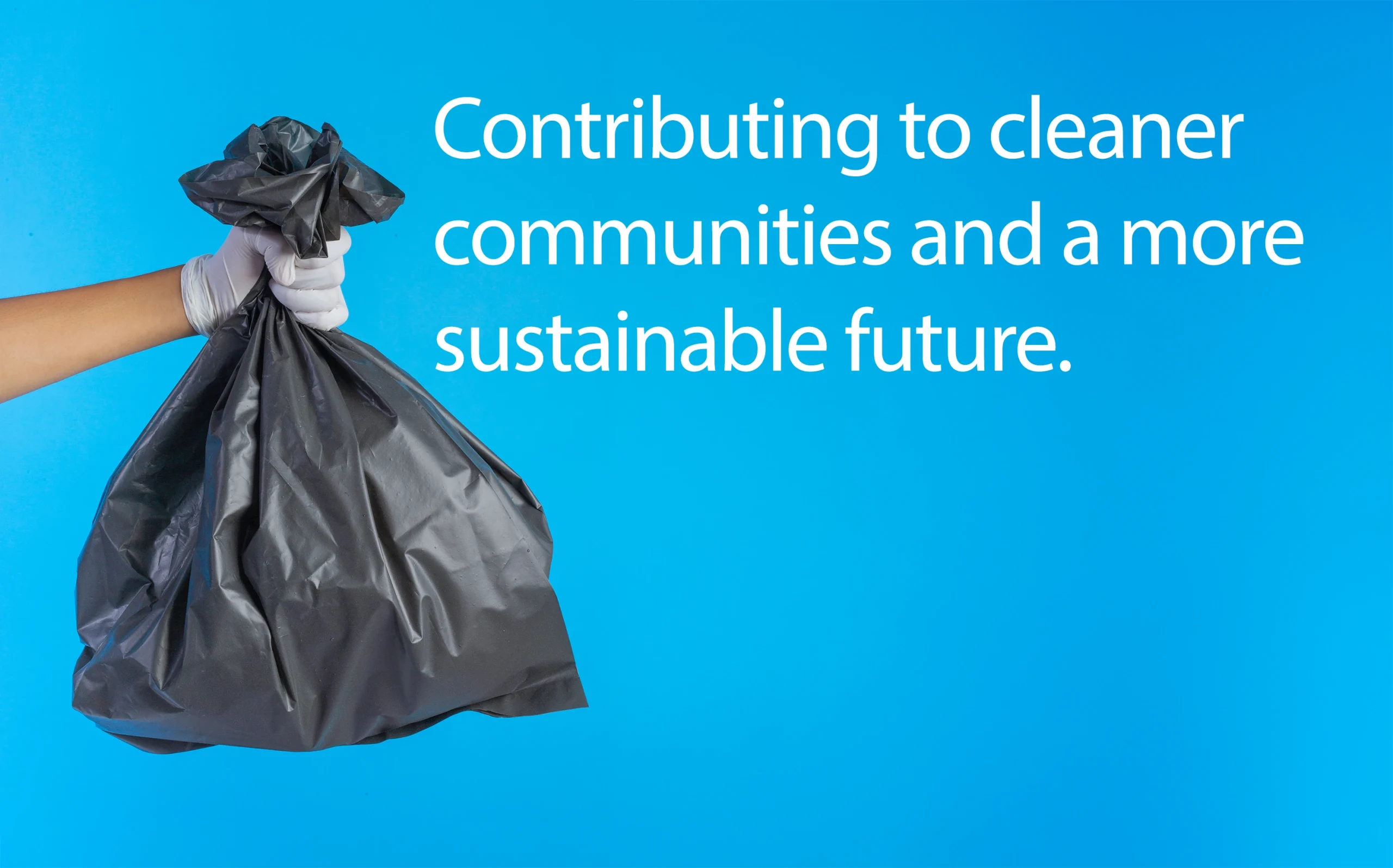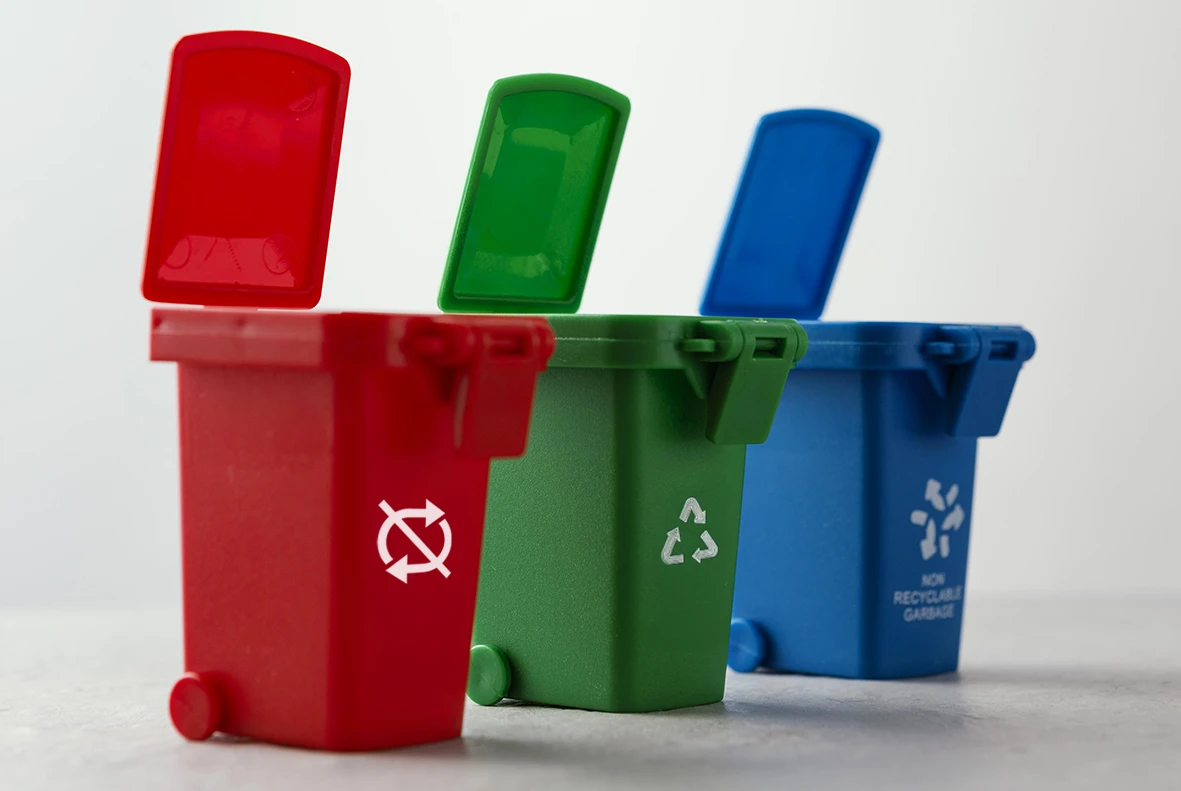When it comes to waste management, many residents may see it as a simple task—putting their bins out on the curb and sorting recyclables. But the truth is, a lot of people don’t fully understand the impact their actions have on the environment or how they can better contribute to sustainability. This is where a well-designed guide can make all the difference.
As a graphic design firm, we understand that the design of a waste management guide is about more than just conveying information—it’s about making the process clear, engaging, and inspiring. It’s about using design to encourage residents to take action and to help them understand that they are part of something bigger—contributing to cleaner communities and a more sustainable future.

Designing for Clarity and Engagement
To create a successful waste management guide, we must ensure that the design is clear, approachable, and easy to follow. When people understand what to do and why it matters, they’re more likely to follow through with the recommended actions.
- Visual Hierarchy: Waste management guides need to be scannable. Most residents won’t read every word, but they will look for key pieces of information quickly. Use large, bold headers, bullet points, and icons to make important steps and tips stand out. A clear structure helps readers find what they need at a glance.
- Step-by-Step Instructions: Break down the waste sorting process into simple, easy-to-follow steps. Visual aids, such as icons or color-coded charts, can help illustrate the different categories of waste (e.g., recyclables, compost, landfill). This reduces confusion and makes it easier for people to act on the information.
- Eye-Catching Graphics: Use visuals that not only capture attention but also reinforce the message. Illustrations, photos, or diagrams showing residents sorting their waste can help people visualize the process and encourage them to take similar actions in their own homes.
Incorporating Behavior Change into the Design
A well-designed guide is not just informative—it’s designed to inspire action. Waste management isn’t just about following the rules—it’s about changing behaviour and making sustainable practices a part of everyday life. This is where behaviour change principles come into play.
- Make it Relevant: For residents to take waste management seriously, the guide must speak directly to them. Highlight the direct benefits of proper waste sorting, like reducing landfill waste or saving energy. If possible, include local statistics, such as how much waste a neighbourhood collectively diverts from landfills, to show the power of community action.
- Simplify the Actions: Behavior change is more likely when people feel the steps are easy to follow. If the guide makes sorting waste simple and straightforward, residents will be more likely to stick to it. Use clear instructions and break down complex tasks (such as understanding composting or recycling rules) into manageable, bite-sized pieces.
- Positive Reinforcement: Encourage readers by showing the positive outcomes of waste management. Include inspiring stories from neighbours or community members who have taken action, or celebrate milestones such as how much waste has been diverted or how clean the community looks. Positive reinforcement can make people feel good about their contribution and motivate them to continue.
- Make It Social: People are often motivated by the actions of others. By framing waste management as a community effort, you can tap into a sense of belonging. Consider including a call-to-action encouraging readers to share their waste management efforts on social media or participate in local clean-up events. This sense of social accountability can help create a culture of sustainability.

Accessibility for All Residents
A successful guide must be accessible to every resident, from families with young children to seniors, and everyone in between. The design should ensure that the guide is easy for anyone to read and understand.
- Simple Language: Avoid using technical jargon or complicated terms. Speak directly to your audience in a tone that is welcoming, non-patronizing, and clear. Remember, the goal is not just to inform but also to make residents feel comfortable and empowered to take action.
- Scannable and Digestible: Not everyone will read the entire guide from start to finish. Many people will scan for key points. Use headers, subheaders, and call-out boxes to highlight the most important information. A checklist or a FAQ section can be especially helpful for quick reference.
- Multi-Platform Accessibility: In today’s digital world, it’s important to make the guide available both in print and online. Many residents may prefer a physical guide they can keep near their bins, while others might want an easy-to-access digital version on their phones. Ensure the online version is mobile-friendly and easy to navigate.
- Large, Readable Fonts: Use large, legible fonts and ensure there is enough contrast between the text and the background to accommodate those with visual impairments. This ensures that your guide is accessible to all, regardless of age or ability.
Use of Colour and Design to Reinforce the Message
Colours play a vital role in communicating meaning and encouraging behaviour change. In a waste management guide, you can use colour psychology to subtly influence actions and attitudes.
- Green for Sustainability: Green is often associated with sustainability, growth, and environmental consciousness. Use this color to highlight sections related to recycling or composting.
- Red for Attention: Use red for warning signs or to highlight actions that should be avoided, such as placing non-recyclable items in the recycling bin.
- Color Coding: For quick reference, color-code different waste categories (e.g., green for compost, blue for recycling, gray for landfill) to make it easier for residents to visually identify what goes where.
Motivating Ongoing Participation
Creating an effective guide is just the beginning. To sustain behaviour change, residents need regular reminders and motivation to continue engaging with waste management practices.
- Regular Updates: Consider providing regular updates, reminders, or seasonal tips to help residents stay informed. Whether it’s new rules, tips for reducing waste, or fun facts about recycling, keeping the message fresh helps maintain interest.
- Incentives and Recognition: Recognizing residents who go above and beyond in their waste management efforts can be a great motivator. Offer incentives like public recognition or small rewards to encourage ongoing participation.
- Call to Action: Encourage residents to take the next step. Whether it’s signing up for a community waste reduction program, attending a local recycling event, or simply sharing their tips with neighbours, make sure there’s always a way for residents to engage further.
KIMBO is currently collaborating with the City of Toronto on a waste management project—creating engaging, behavior-driven designs that inspire real community action.
We’re excited to share more soon—follow us on Instagram and LinkedIn and stay tuned for the launch
If you’re looking to communicate more effectively and drive change in your community, let’s work together. Contact us today to see how our design solutions can help bring your vision to life.


